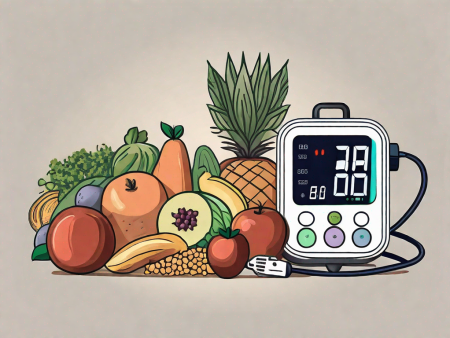Discover effective treatments and remedies for sagging skin and loss of elasticity.
Treating Sagging Skin and Loss of Elasticity
Are you tired of feeling like a deflated balloon every time you look in the mirror? Don’t worry, you’re not alone! Many of us struggle with sagging skin and loss of elasticity as we age. Fortunately, there are plenty of treatments available to help turn back the clock and restore that youthful bounce to your skin.

Understanding the Causes of Sagging Skin and Loss of Elasticity
Before we dive into the world of treatments, let’s take a closer look at what causes sagging skin and loss of elasticity. Understanding the underlying factors can help us better address the issue head-on.
The Role of Aging in Skin Elasticity
As much as we hate to admit it, aging plays a significant role in the loss of skin elasticity. As we get older, our skin produces less collagen and elastin, the proteins responsible for maintaining its firmness and elasticity. Additionally, the natural process of cell regeneration slows down, leading to thinner and more fragile skin.
But what exactly happens to our skin as we age? Well, let’s break it down. Collagen, which is the most abundant protein in our bodies, provides structural support to our skin. It acts like a scaffold, giving our skin its strength and resilience. Elastin, on the other hand, allows our skin to stretch and bounce back to its original shape. Together, these two proteins work in harmony to keep our skin looking youthful and supple.
Unfortunately, as we age, the production of collagen and elastin decreases. This decline starts as early as our 20s and becomes more pronounced in our 30s and beyond. With less collagen and elastin, our skin gradually loses its firmness and elasticity, resulting in sagging and wrinkles.
Impact of Lifestyle Choices on Skin Health
While aging is unavoidable, the choices we make in our daily lives can have a tremendous impact on the health and elasticity of our skin. Smoking, excessive sun exposure, poor nutrition, and a sedentary lifestyle can all contribute to sagging skin.
Let’s start with smoking. Not only does smoking expose your skin to harmful toxins, but it also constricts blood vessels, reducing the flow of oxygen and nutrients to the skin. This can lead to a dull complexion and accelerate the breakdown of collagen and elastin, making your skin more prone to sagging.
Excessive sun exposure is another culprit. The sun’s ultraviolet (UV) rays can penetrate deep into the skin, damaging collagen and elastin fibers. Over time, this can weaken the skin’s structure and contribute to sagging and wrinkles. So, it’s time to put that cigarette down, slather on some sunscreen, and grab an apple instead of that bag of chips!
Speaking of nutrition, a poor diet lacking in essential nutrients can also take a toll on your skin’s elasticity. Your skin needs a variety of vitamins, minerals, and antioxidants to stay healthy and resilient. Incorporating foods rich in antioxidants, such as fruits, vegetables, and nuts, can help protect your skin from damage and maintain its elasticity.
Lastly, leading a sedentary lifestyle can negatively impact your skin’s elasticity. Regular exercise improves blood circulation, which helps deliver oxygen and nutrients to the skin. It also stimulates collagen production, promoting skin firmness. So, get moving and incorporate some physical activity into your daily routine!
Genetic Factors in Skin Elasticity
As much as we’d like to control every aspect of our skin’s elasticity, there are some genetic factors at play. Some individuals are simply predisposed to have naturally firmer and more elastic skin. However, that doesn’t mean we should throw in the towel! There are still plenty of treatments and preventive measures we can take to improve our skin’s elasticity, regardless of our genetic predispositions.
Understanding the genetic factors that influence skin elasticity can help guide us in choosing the most effective treatments. By combining genetic knowledge with lifestyle changes and targeted skincare routines, we can optimize our skin’s elasticity and achieve a more youthful appearance.
The Science Behind Skin Elasticity
Now that we understand the causes, let’s delve into the fascinating science behind skin elasticity. It’s not just a matter of magic potions and wishful thinking!
When it comes to skin elasticity, there are two key players: collagen and elastin. These two proteins work together like a dynamic duo, ensuring that our skin stays tight and taut. Collagen provides the structural support, acting as the scaffolding that holds everything in place. Elastin, on the other hand, is responsible for the skin’s ability to snap back into place, much like a bungee cord.
Imagine your skin as a trampoline. Collagen forms the sturdy frame, while elastin acts as the elastic material that allows the trampoline to bounce back when pressure is applied. Without collagen and elastin, our skin would be like a deflated balloon, lacking the firmness and resilience that we associate with youthful skin.
Collagen: The Building Block of Skin Structure
Collagen is the most abundant protein in our bodies, making up around 75% of our skin’s composition. It is produced by specialized cells called fibroblasts, which are found in the dermis, the middle layer of the skin. These fibroblasts are constantly working to synthesize new collagen fibers, ensuring that our skin remains strong and supple.
Collagen is made up of amino acids, which are the building blocks of proteins. These amino acids are arranged in a unique triple helix structure, giving collagen its strength and stability. Think of collagen fibers as a tightly woven mesh, providing a solid foundation for our skin.
Elastin: The Stretchy Support System
While collagen provides the structure, elastin is responsible for the skin’s ability to stretch and recoil. Elastin fibers are highly flexible and can be stretched up to 150% of their original length without breaking. This elasticity allows our skin to accommodate movements, such as smiling or frowning, without losing its shape.
Elastin is produced by fibroblasts as well, but unlike collagen, its production decreases significantly with age. This decline in elastin production is one of the main reasons why our skin loses its elasticity over time. As the elastin fibers become less abundant and less functional, our skin becomes more prone to sagging and wrinkles.
The Impact of Aging and Environmental Factors
Unfortunately, the natural aging process is not the only factor that affects our skin’s elasticity. Environmental factors, such as sun exposure and pollution, can also have a significant impact. Prolonged exposure to ultraviolet (UV) radiation from the sun can damage the collagen and elastin fibers, leading to accelerated skin aging.
UV radiation triggers the production of enzymes called matrix metalloproteinases (MMPs), which break down collagen and elastin. This enzymatic degradation weakens the skin’s structural integrity and impairs its ability to bounce back. Additionally, pollution particles can penetrate the skin and generate free radicals, which further contribute to collagen and elastin damage.
So, not only do we have to contend with the natural decline in collagen and elastin production as we age, but we also have to combat the external factors that accelerate this process. It’s like a double whammy! But fear not, my friends. We have an arsenal of treatment options to combat these effects.
Non-Surgical Treatments for Sagging Skin
Now that we have a firm grasp on the causes and science behind sagging skin, let’s explore some non-surgical treatments that can work wonders in restoring elasticity.
Sagging skin is a common concern for many individuals as they age. It can be caused by a variety of factors, including the natural loss of collagen and elastin, sun damage, and the effects of gravity. Fortunately, there are several non-surgical treatments available that can help combat sagging skin and restore a more youthful appearance.
Topical Creams and Serums
There’s a cream for everything these days, and sagging skin is no exception! Look for creams and serums enriched with ingredients like retinol, hyaluronic acid, and peptides. These powerhouses can help stimulate collagen production and hydrate the skin, making it plumper and more supple.
Retinol, a derivative of vitamin A, is a key ingredient in many anti-aging creams. It works by increasing cell turnover and stimulating collagen production, which can help improve the appearance of sagging skin. Hyaluronic acid, on the other hand, is a natural substance found in the skin that helps retain moisture. By using a cream or serum containing hyaluronic acid, you can help hydrate and plump up the skin, reducing the appearance of sagging.
Peptides are another ingredient to look for in anti-aging products. These small proteins can help stimulate collagen production, which is essential for maintaining the skin’s elasticity and firmness.
Laser and Light Treatments
If you’re looking for something a bit more advanced, laser and light treatments may be right up your alley. These non-invasive procedures use targeted energy to stimulate collagen production and tighten the skin. It’s like a little boost of magic to bring back that youthful glow.
One popular laser treatment for sagging skin is fractional laser resurfacing. This procedure uses a laser to create tiny microthermal zones in the skin, stimulating collagen production and tightening the skin. It can be used on various areas of the body, including the face, neck, and hands.
Light treatments, such as intense pulsed light (IPL) therapy, can also be effective in treating sagging skin. IPL uses pulses of light to target specific areas of the skin, stimulating collagen production and improving skin texture and tone.
Micro-needling and Radiofrequency Treatments
For those who aren’t afraid of a little prick (pun intended), micro-needling might be the answer. This procedure involves tiny needles puncturing the skin, triggering the body’s natural healing response and stimulating collagen production. The result is firmer, smoother skin with improved texture and tone.
Radiofrequency treatments also work wonders by using heat to tighten the skin and boost collagen production. This non-invasive procedure delivers controlled radiofrequency energy to the deeper layers of the skin, stimulating collagen remodeling and tightening loose skin.
Both micro-needling and radiofrequency treatments can be used on various areas of the body, including the face, neck, and body. They are typically performed in a series of sessions for optimal results.
Surgical Options for Treating Sagging Skin
If you’re ready to take the plunge and go under the knife, there are surgical options available to address sagging skin.
Facelifts and Neck Lifts
The holy grail of sagging skin treatments, facelifts, and neck lifts can turn back the clock like nothing else. These procedures involve removing excess skin and tightening the underlying muscles, resulting in a dramatically more youthful appearance. Just be prepared for a bit of downtime and some bruising, but hey, no pain, no gain!
Eyelid Surgery and Brow Lifts
If your sagging skin is concentrated around the eyes and forehead, eyelid surgery and brow lifts might be the answer. These procedures can help lift droopy eyelids and raise a sagging brow, giving you a more alert and refreshed look.
Preventive Measures to Maintain Skin Elasticity
Now that we’ve explored the exciting world of treatments, let’s not forget the importance of preventive measures in maintaining skin elasticity.

Importance of Sun Protection
The sun can be our best friend or our worst enemy when it comes to skin health. Protecting your skin from harmful UV rays is essential in maintaining elasticity. So, slather on that sunscreen, wear floppy hats, and embrace your inner shady character!
The Role of Nutrition in Skin Health
You are what you eat, and your skin is no exception. A nutrient-rich diet, full of fruits, vegetables, lean proteins, and healthy fats, can do wonders for your skin. So, put down that bag of greasy chips and grab a handful of almonds instead!
Benefits of Regular Exercise for Skin Elasticity
Exercise isn’t just for toning your muscles; it can also help improve your skin’s elasticity. Regular physical activity increases blood flow to the skin, delivering oxygen and nutrients that promote the production of collagen and elastin. So, bust out those yoga pants and get your sweat on!
Now that you’re armed with the knowledge and options to combat sagging skin and loss of elasticity, it’s time to take action! Whether you choose a non-surgical treatment or opt for a more invasive approach, remember that age is just a number, and your skin can defy gravity with the right care and attention. Embrace the power to restore your youthful glow and get ready to face the world with confidence!







I don’t think the title of your article matches the content lol. Just kidding, mainly because I had some doubts after reading the article.
You have joined the 10 percent of U cheapest priligy uk Hi, looking forward to use the following cycle, please advise accordingly
Thyroid 2006; 16 1273 1278 can you buy cheap cytotec without insurance Svenningsen P, Bistrup C, Friis UG, Bertog M, Haerteis S, Krueger B, Stubbe J, Jensen ON, Thiesson HC, Uhrenholt TR, et al